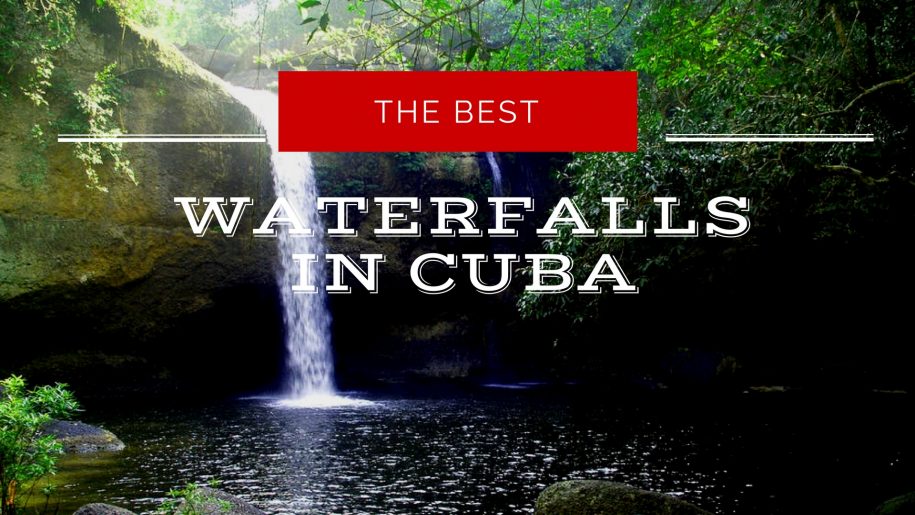A river is a river while it flows along a horizontal plane. When it reaches a vertical drop, the water simply falls. It’s just gravity really. This is all a waterfall is, but to define it in such terms doesn’t take into account the beauty and hypnotic quality of actually watching it happen.
What is it about the humble waterfall that so fascinates us?
Niagara Falls alone attracts upwards of 12 million people each year.
More adventurous tourists might head to Zimbabwe to see Victoria Falls, or to Venezuela to see Angel Falls. Cuba might be seen as a land of music, smiling people, beaches, and drinks with an elevated rum content, but the Cuba waterfalls hold their own against some of their better known competitors around the world. Usually immersed in isolated parts of the country, away from the hustle and bustle of the large cities and towns, these waterfalls offer you the chance to see another side of the island nation.
And it’s a side we are sure you would want to see…
Scary and Exhilarating
Some 25% of Cuba’s Holguín province is covered in forests, and 8486 hectares of this is taken up by the La Mensura National Park. It’s in the heart of this park that you will find a particularly impressive example of Cuba waterfalls. Many visitors to the park make the trip from the nearby beachside town of Guardalavaca, although the Guayabo Falls is not for the faint of heart.
The primary viewing platform for the falls is some 480 metres above sea level, and when the falls are calm, your guide will tell you whether it’s safe to swim in one of the pools at the top of the falls. It might sound risky, what with the more than 200 metre drop over the cliffs, but it’s perfectly safe. You also have the option of hiking down to the base of the waterfall, but this should only be performed by the physically able. It’s a true adventure, with a climb of one hour to get down, followed by two hours to get back up again.
Having said that, it’s not an adventure you’re likely to forget.
Isolated and Beautiful
About 30 minutes outside of Trinidad is the path that will lead you to the Salto del Caburni, a magnificent example of Cuba waterfalls located within the Topes Collantes National Park. It’s not an easy hike, and you’re looking at around 2.5 hours of walking (each way), so it’s really only something for able bodied nature lovers. The scenery is lovely, and you will actually pass a number of coffee plantations. Still, this waterfall is stunning (and perhaps even more so because you had to work to see it), with the water cascading down from a height of 64 metres into the crystal clear pool below.
After such a long hike, you are going to need to take a swim, but please exercise caution if you’re considering emulating the locals who jump from the rocks down into the pool. Remember that they’ve done it before, and that you’re a long way from civilisation. Cuba has one of the highest doctor to patient ratios in the world, but that’s not exactly something you’ll want to experience firsthand.
Into the Rainbow
Unless you happen to live in a desert, you’re probably don’t want to seek out rainfall while you’re on holiday. Don’t let that dissuade you from visiting Soroa, some 95 km from Havana. This mountainous region is one of the rainiest spots in the entire country, earning it the nickname the rainbow of Cuba, which is not all that imaginative, but still… appropriate, what with all the rainbows that are seen around here.
The Salto de Soroa is a picturesque waterfall, the strength of which varies depending on just how much rain has been falling.
Please don’t think that it rains here all the time, and like most of Cuba, the rain falls briefly and then the sunny skies return. Salto de Soroa is a true beauty, with the water cascading downwards over a protruding rock, making it look like a psychedelic flower. The pool beneath the falls is barely deep enough for swimming, but you can still get in and approach the falls. You could also climb to the top to enjoy the view, but this steep and slippery climb might not be suitable for young children or the elderly.
The Best Cuba Waterfalls for Swimming
You’ll be reminded how refreshingly undeveloped much of Cuba is when you travel to El Nicho Waterfalls, near Cienfuegos. The curving road that leads uphill might remind you of a particularly bumpy plane ride when the pilot turns the “Fasten Seatbelts” sign on. But this enchanting spot is about the best Cuba waterfalls for swimming. Arrive early in the day (you can take a taxi from Cienfuegos or arrange a tour) to avoid the crowds, because despite being somewhat off the beaten path, the El Nicho Waterfalls are popular with locals and tourists alike.
The water gently cascades downwards and fills several natural pools. Even if you feel that the water is too cold to swim in (and it does get a little bit frigid sometimes), you can appreciate the profound beauty of the place.
The El Nicho park is maintained by the local authorities, meaning you’ll need to pay a nominal entry fee, but you can make a day of it. There are a small number of paths throughout the park (nothing too daunting, although the final stages might be too steep for some), meaning you can have a relaxing hike, followed by a bracing dip in the hypnotically clear water as the El Nicho Waterfalls themselves cascade down upon you.
If you like this article, please click the link to share it with your friends or leave a comment!
